
Those of you who have been around this blog for a while will know that I am a bit of a fan of the inverted mystery. While I make a point to read a pretty wide variety of crime and mystery fiction, I review inverted mysteries more frequently than any other type and I have no intention on slowing down on that front.
One of the things that excites me most about the inverted mystery and crime sub-genres (and yes, I think they are slightly different – the former is akin to a detective novel whereas the latter is more psychological) is the sheer diversity of approaches that writers take with these forms.
For some writers the use of an inverted form is a chance to experiment with the structure of a mystery story and show that you can still craft a viable puzzle even if you know the killer’s identity. Others like to use the form to explore the psychology of killers or their perspective on the cat-and-mouse game of detection. Sometimes these books are light-hearted and comedic with the killer’s plans either coming to nothing or being turned back on the killer themselves. Others are dark, gritty and drenched in noir-style.
The list I have compiled today is not an attempt to pick the five best inverted mysteries. While I have read quite a number of these over the past few years I know that there are many I have yet to try including a few classics of the sub-genre. What I was aiming to do instead was illustrate some of the different ways writers have interpreted this simple idea.
One of my paramount concerns was that the titles I picked should be available and affordable. I also wanted my picks to represent the different styles of inverted mysteries out there so I tried to select a mix of story types. This means that I had to leave out some favorite authors and titles such as Crofts’ The Affair at Little Wokeham. For this reason I have included further reading suggestions after each of my selections to give you other options if a particular type of inverted story appeals to you.
One title that did not make the list is Malice Aforethought. I gave considerable thought to its inclusion but ended up opting against it because it is so clearly the dominant title in the sub-genre. It so obviously would merit inclusion for its importance to the development of the form that I think highlighting it would add very little. While I think it tends to be a little overrated, I do suggest you seek it out if you haven’t read it already.
On with the list…
Antidote to Venom by Freeman Wills Crofts
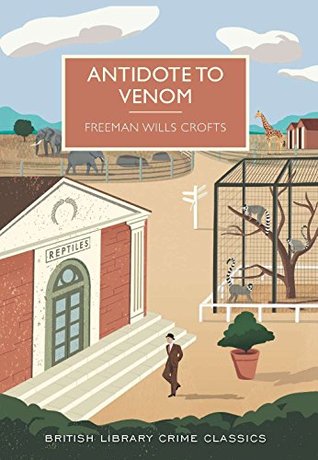
This is an example of the Howcatchem structure. In this type of story the reader learns the killer’s identity, their plan and their motivation early in the novel. Their job is to work out how the detective will unpick the information they can see to get at the truth and bring the killer to justice. This is the most common form of inversion and certainly the best known – TV’s Columbo is structured this way.
Freeman Wills Crofts’ Antidote to Venom is a great example of this format because it is essentially split into two sections. The first builds our understanding of how the killer comes to be murdering someone at all, explaining their motivation, choice of victim and plan. The second follows Inspector French as he tries to unpick the evidence.
This proves particularly tricky because the person carrying out the killer does not a personal motive to carry out the murder. The scheme Crofts devises is really quite technically ingenious and memorable and while I found French’s investigation a little too slow and detail-oriented, I love the story’s backdrop of a midsized metropolitan zoo and the characterization of the killer, George.
Read my full review of this title here.
If You Like This, Try
Strangers on a Train by Patricia Highsmith operates with a similar premise in which the person who performs the killing does not have a direct motive for carrying out the murder.
Crofts wrote three other inverted stories each of which takes a slightly different structural approach [Update 3/10/2020 – There are at least two others I was unaware of at this time – Anything to Declare? and Fatal Venture as well as a short story collection Many a Slip]. My favorite is the one that is hardest to find The Affair at Little Wokeham (also called Double Tragedy) and it’s well worth a look if you can find an affordable copy.
Finally I strongly recommend Heir Presumptive by Henry Wade. It is one of my favorite inverted mysteries in part thanks to a clever premise and its really effective ending.
The New Sonia Wayward by Michael Innes

This is an example of a comedic approach to the inverted mystery novel. Typically these sorts of stories present us with a bumbling, incompetent would-be murderer (or person perpetrating some other form of crime) who may or may not succeed. Often they don’t and their plan will end up backfiring on them in some fashion, possibly leading to their own death or humiliation.
The New Sonia Wayward is a great example of this type of story because the protagonist, Colonel Petticate, does not actually kill his dead wife. Instead he is trying to cover up a natural death but does it so badly that he finds himself in a compromising situation.
This is a wild ride of a story packed with unpredictable and comedic twists and turns. I enjoy the digs and jokes at the publishing industry’s expense and found it a charming and engaging read.
Read my full review of this title here.
If You Like This, Try
Richard Hull’s The Murder of My Aunt is probably the best-known of this sort of inverted story and it is certainly enjoyable though I am a little reluctant to label it an inverted mystery novel at all. I think it’s a great read though and I think it puts an interesting if predictable twist on the subgenre.
Leo Bruce’s Case for Sergeant Beef is also a great choice with a quirky would-be killer with an interesting plan. It is frequently very funny and can be enjoyed independently of Bruce’s other Sergeant Beef stories.
Finally Anthony Roll’s Family Matters (yet to be reviewed on this blog) presents an interesting situation in which we know the identity of two people who are seeking to kill the book’s victim but end up inadvertently spoiling each others’ plans.
A Demon in My View by Ruth Rendell

I don’t often review books featuring serial killers on this blog but one of the strongest currents of inverted fiction deals with psychopathic killers.
Sometimes these sorts of stories can try to realistically explore the psychology of a psychopath, others will take a more stylised approach or use it to tell a more conventional thriller.
Ruth Rendell’s A Demon in My View presents us with a serial killer who has found a way of suppressing his instincts. He has set up a mannequin in an outbuilding in the block of flats in which he lives which he uses to play out his fantasies.
Unfortunately for him he finds his life is turned upside down when someone with a very similar name moves in to the same building, sparking a dangerous and destructive obsession in him.
Read my full review of this title here.
If You Like This, Try
I have fewer examples here because it’s not my favorite type of fiction. One I can recommend though is Jim Thompson’s Pop. 1280. It is an extremely dark, perverse and often amusing look into the mind of a killer.
Hugh Holton’s Windy City explores a married couple who kill for the enjoyment of it. I was entertained by it but it is hard to believe that these killers could succeed for as long as they do.
They Shoot Horses, Don’t They? by Horace McCoy
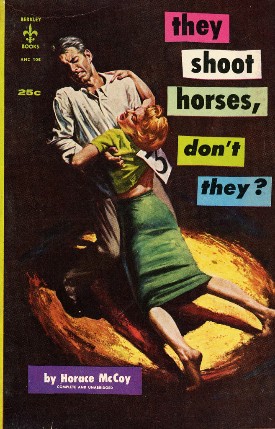
This is an example of a justification narrative or whydunnit. The reader begins the novel with the knowledge of who the killer killed and how it was done but their motive is unclear.
They Shoot Horses, Don’t They? is a punchy, brutal and bleak tale set against the backdrop of a gruelling dance marathon contest. Couples compete, dancing for an hour and a half before getting a ten minute break and starting all over again.
The protagonist, Robert, is an aspiring film director who agrees to dance with Gloria, an actress who is hoping to catch a film producer’s attention during the contest. We know that by the end of the contest several weeks later he will be arrested and put on trial for her murder and over the course of the book we learn what led him to take her life.
McCoy’s story works because it is a blistering, uncomfortable and provocative reading experience packed with salty prose and a decidedly noir outlook on humanity.
Read my full review of this title here.
If You Like This, Try
The whydunnit seems to be the least used inversion of the typical mystery formula but there are a few examples out there. The Collini Case is presented as a legal thriller but it does ask the reader to figure out why a man has committed a murder.
Another interesting example is James Hogg’s The Private Memoirs and Confessions of a Justified Sinner though it is not usually categorized as a genre work. Written in the early nineteenth century, Hogg presents us with two accounts of a murder and leaves it open to the reader which interpretation they favor. It can be a bit of a dense read and the supernatural elements will not be for everyone but its focus on the killer’s psychology makes it feel a surprisingly modern work in other respects.
Blueprint for Murder by Roger Bax

One of the most interesting aspects of the inverted crime novel is the way it can allow writers to explore the social causes of crime. Blueprint for Murder was written in the immediate aftermath of the Second World War and it explores the idea that war is so dehumanizing that it may have eroded any sense of social responsibility or ethics.
I like to think of these as kitchen sink inverted crime stories as the emphasis here is on trying to channel a sense of gritty realism though they can still contain some fantastic developments. While I have only encountered a few such stories so far they are mostly from that early postwar period of 1945-1960.
Often these sorts of stories contain elements of noir style and portray the killer not as a deviant who stands apart from society but its logical product. This can sometimes make for grim reading, particularly as society is usually shown to be fairly impotent in dealing with these sorts of threats, but I do find books in this style to be an interesting bridge between the inverted mystery and the sorts of psychological crime and serial killer fiction of later decades.
Read my full review of this title here.
If You Like This, Try
Too Soon to Die and Diplomat’s Folly by Henry Wade both feature protagonists who believe that the rules should not apply to them. The latter, much like Blueprint, features a soldier who has returned from the war.
Roger Bax’s Disposing of Henry similarly presents us with another disaffected soldier – this time an injured airman who is invalided out of the war and plots with a woman to murder her husband.
Bonus Selection
A Kiss Before Dying by Ira Levin

A hybrid inverted mystery story that blends elements of the howcatchem and the whodunnit to great effect.
This is invariably my choice whenever I am asked to pick my favorite inverted mystery novel because it manages to really showcase what you can do with the form within the familiar structure of a traditional detective story. Levin does this brilliantly by splitting his narrative into three sections, each told in a different style.
The first of those sections is delivered from the perspective of the killer and establishes plenty of information about them. We learn their relationship to the victim, their motivation and exactly how they did it. Crucially however we never learn their name or get a clear sense of their appearance so when the victim’s sister appears in the second section the reader has no idea which of the characters was responsible.
I consider it the best crime novel I have read, period, and I would definitely recommend it if you haven’t. It is a cracking read, full of tension and bold, memorable characterizations. The split into three sections helps Levin keep the material feeling fresh and I found it gripping right to the last page.
Read my full review of this title here
The image in the banner is taken from the cover on a PAN edition of Malice Aforethought by Frances Iles.

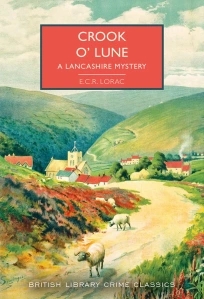
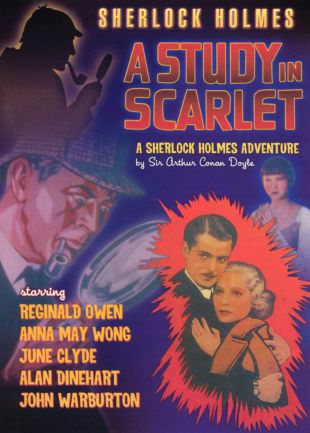
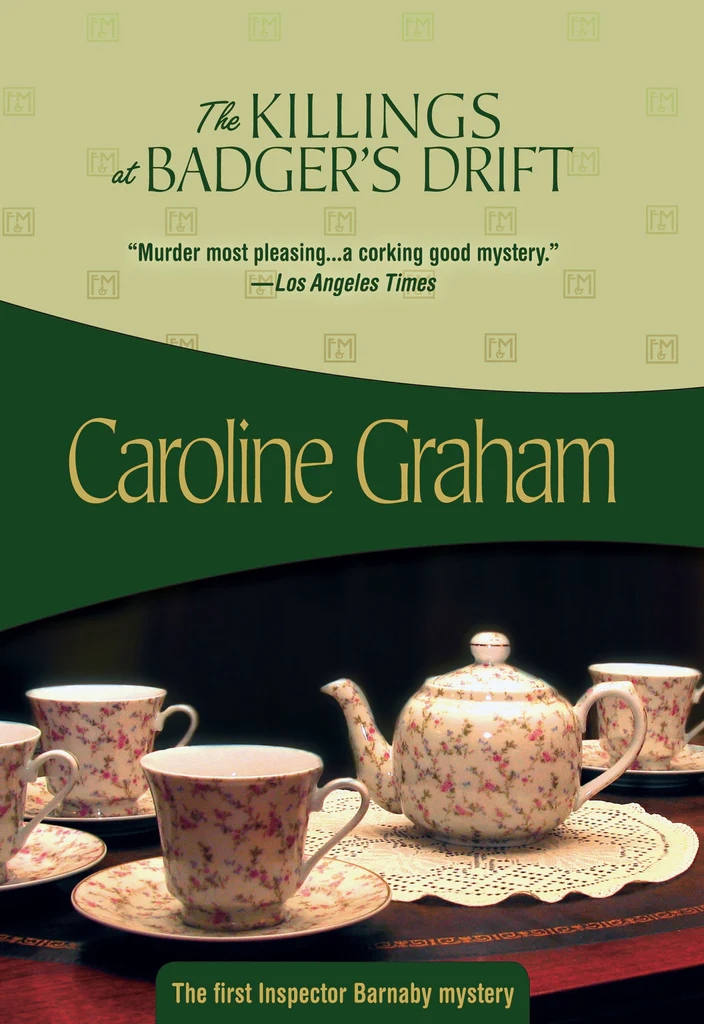
Leave a comment